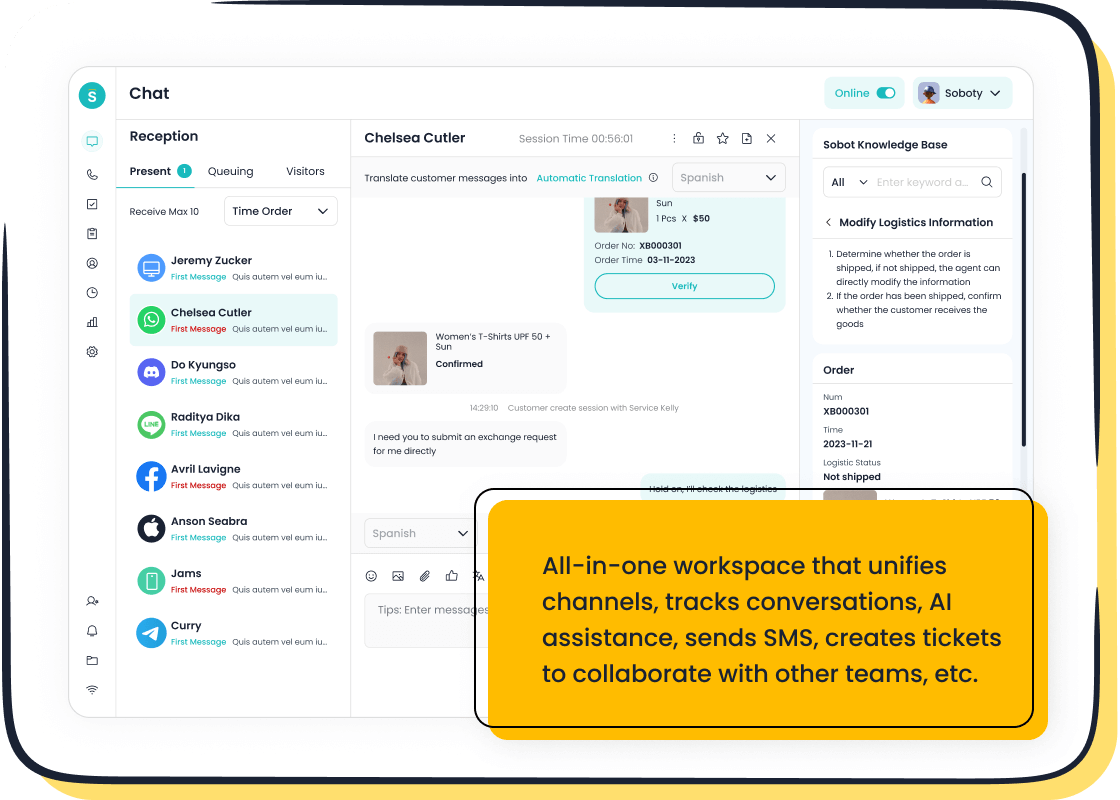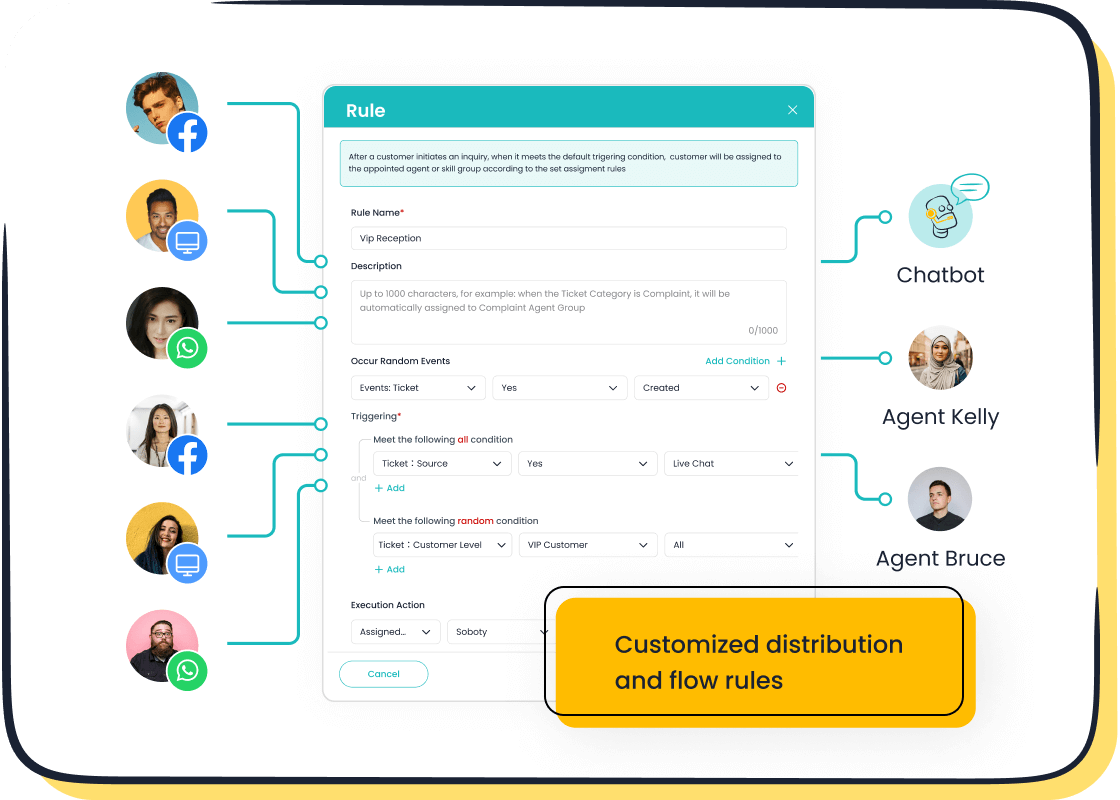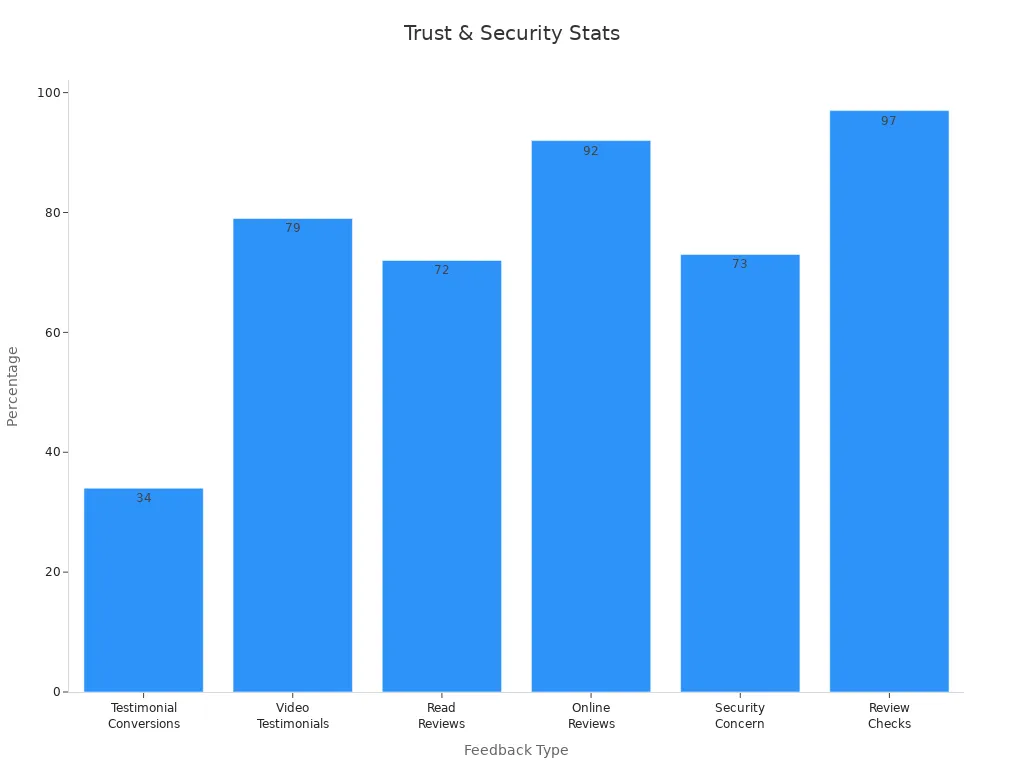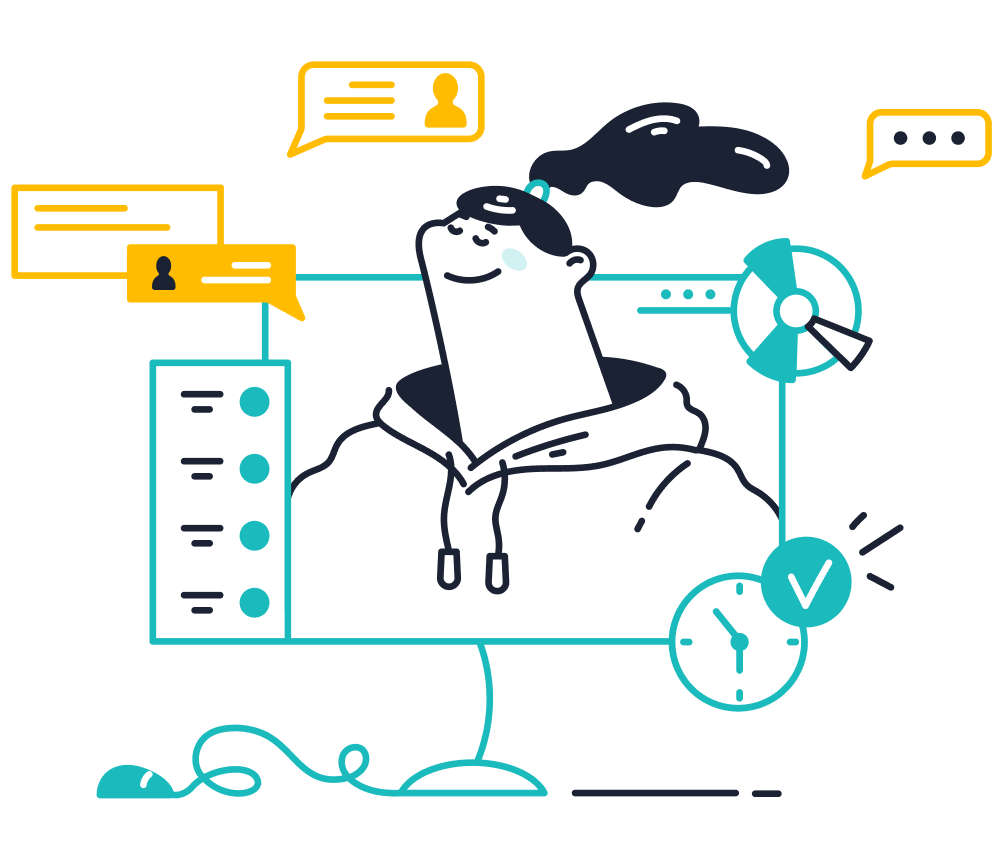Master Ecommerce CRO with This Step-by-Step Guide

Imagine turning your e-commerce website into a sales powerhouse without spending more on ads. That’s the magic of conversion rate optimization for ecommerce. With an average conversion rate of just 2.9% across industries, every visitor counts. Tablet and desktop users convert slightly better at 3.6%, but there’s still room to grow. By focusing on optimizing your site, you can maximize your marketing spend and turn clicks into customers. Whether it’s reducing cart abandonment or improving your checkout flow, Sobot has tools to help you succeed.
Understanding Conversion Rate Optimization for Ecommerce
What is eCommerce CRO?
Let’s start with the basics. eCommerce CRO, or conversion rate optimization for ecommerce, is all about making your online store work smarter, not harder. It’s the process of improving your website or app to encourage more visitors to take specific actions—like making a purchase, signing up for a newsletter, or even just clicking on a product. Think of it as fine-tuning your digital storefront to turn casual browsers into loyal customers.
Here’s a quick breakdown to make it clearer:
| Concept | Description |
|---|---|
| eCommerce CRO | The process of improving an eCommerce website or app to encourage more visitors to take desired actions, like making purchases or signing up, through testing and optimization strategies. |
| Conversion Rate | The percentage of website visitors who complete a desired action. |
| CRO Marketing | A strategy that improves a website’s performance to increase the percentage of visitors who take desired actions, such as making a purchase or signing up for a newsletter. |
When you focus on eCommerce CRO, you’re not just guessing what works. You’re using proven strategies for ecommerce conversion rate optimization to make data-driven decisions that improve your site’s performance.
Why is eCommerce Conversion Rate Optimization Crucial?
Why should you care about optimizing your e-commerce conversion rates? Because even small improvements can lead to big wins. Let’s look at some numbers:
| Statistic Description | Value |
|---|---|
| Average conversion rate across ecommerce businesses | 1.81% |
| Average global eCommerce conversion rate | 2.86% |
| Top-performing websites achieving conversion rates above | 11.45% |
Most e-commerce sites convert less than 3% of their visitors. That means 97 out of every 100 visitors leave without buying anything. But here’s the good news: with the right tweaks, you can join the top 10% of websites that achieve conversion rates above 11.45%.
Did you know? Small changes, like emphasizing free shipping or creating urgency with limited-time offers, can lead to significant revenue boosts. For example:
- Highlighting free shipping increased orders by 19%.
- Scarcity tactics, like showing low stock levels, led to a 24.5% revenue uplift.
By focusing on e-commerce conversion rate optimization, you’re not just increasing sales. You’re also improving the overall shopping experience, which keeps customers coming back.
Key Differences Between CRO and General Optimization Practices
Not all optimization is created equal. While general optimization practices aim to improve overall website performance, conversion rate optimization zeroes in on one goal: turning visitors into customers. Here’s how they differ:
- CRO is laser-focused on conversions. It’s about increasing the percentage of visitors who complete desired actions, like buying a product or signing up for a service.
- General optimization is broader. It might include improving page load speed, enhancing SEO, or making the site more visually appealing, but it doesn’t always prioritize conversions.
- CRO relies on data. It uses tools like heatmaps, session replays, and A/B testing to understand customer behavior and identify bottlenecks in the shopping journey.
- General optimization is less targeted. While it improves the overall user experience, it doesn’t always address specific pain points that prevent conversions.
For example, a general optimization strategy might focus on making your homepage look stunning. But CRO would dig deeper, asking questions like: “Why are visitors abandoning their carts?” or “What’s stopping them from clicking the ‘Buy Now’ button?”
Pro Tip: Use tools like Sobot Live Chat to gather real-time customer feedback. Understanding why shoppers hesitate can help you make changes that directly impact your e-commerce conversion rates.
Essential Metrics and Tools for E-Commerce Conversion Rate Optimization
Metrics to Track for CRO Success
Tracking the right metrics is like having a roadmap for your e-commerce success. These numbers tell you what’s working and where you need to improve. Here’s a quick breakdown of the key metrics you should monitor:
| Metric | Description |
|---|---|
| Bounce Rate | Measures visitors who leave without taking any action, showing the quality of your traffic sources. |
| View (PDP) Product Rate | Tracks how well your landing pages generate interest in your products. |
| Add to Cart (ATC) Rate | Indicates how persuasive your product pages are in encouraging shoppers to add items to their cart. |
| Checkouts Initiated | Highlights how many visitors move from the cart to the checkout process. |
| Purchase Rate (CVR) | Shows the percentage of visitors who complete a purchase, reflecting overall conversion success. |
| Average Order Value (AOV) | Reveals how much customers spend on average, helping you gauge the perceived value of your products. |
| Revenue Per Session (RPS) | Combines conversion rate and AOV to measure revenue generated per visitor. |
| Customer Lifetime Value (LTV) | Helps you understand the long-term value of your customers, crucial for planning inventory and marketing. |
By focusing on these metrics, you can uncover insights into customer behavior and make data-driven decisions to improve your e-commerce conversion rates.
Tools to Enhance CRO Efforts
You can’t optimize what you don’t measure. That’s where tools come in. Here are some must-haves for your e-commerce CRO toolkit:
- Google Analytics: Tracks site traffic, user behavior, and conversion paths. It’s your go-to for understanding where visitors drop off.
- HotJar: Offers heatmaps and session recordings to show how users interact with your site. You’ll see exactly where they click—or don’t.

- Sobot Live Chat: This tool takes customer engagement to the next level. By offering real-time support across multiple channels, it helps reduce shopping cart abandonment and boosts conversions by up to 38%. Plus, its built-in analytics evaluate over 150 indicators, giving you actionable insights.
These tools work together to help you identify bottlenecks, test solutions, and create landing pages optimized for conversions.
Using Data to Identify Optimization Opportunities
Data is your secret weapon for spotting opportunities to improve. For example, if your checkout abandonment rate is high, it’s a sign that your process might be too complicated. Tools like Sobot Live Chat can help you gather real-time feedback from customers, so you know exactly what’s causing friction.
Case studies show how powerful data can be. For instance, AppDynamics ran over 200 A/B tests and saw a 20% boost in conversions. Similarly, Happy Ears Hearing Center made small tweaks based on user feedback and increased local conversions by 44%. These examples prove that even minor adjustments can lead to major wins.
Start by analyzing your metrics, then test changes to see what works. Whether it’s simplifying your checkout process or offering free shipping, data-driven decisions will always give you an edge.
Step-by-Step Guide to Boosting Ecommerce Conversion Rates

Simplify the Checkout Process
A streamlined checkout process is one of the easiest ways to boost ecommerce conversion rates. When customers encounter too many steps or unnecessary form fields, they’re more likely to abandon their carts. Simplifying this process can make a huge difference.
Here’s how you can do it:
- Reduce form fields: Only ask for essential information. For example, one e-commerce site cut their form fields from ten to six and saw a 20% increase in completed purchases.
- Offer a single-page checkout: The Vancouver 2010 Olympic store tested this and found that a single-page checkout increased completion rates by 21.8%.
- Provide guest checkout options: Not everyone wants to create an account. Letting customers check out as guests can reduce friction.

Pro Tip: Use tools like Sobot Live Chat to assist customers in real time during checkout. If someone hesitates, a quick chat can address their concerns and prevent abandonment.
By simplifying your checkout process, you’re not just making it easier for customers to buy—you’re also showing them that you value their time.
Optimize Product Pages for Better Engagement
Your product pages are the heart of your e-commerce store. If they don’t grab attention and provide the right information, customers won’t stick around. Optimizing these pages can significantly increase ecommerce conversion rates.
Focus on these key areas:
- High-quality visuals: Use clear, professional images that showcase your products from multiple angles.
- Detailed descriptions: Write compelling copy that highlights benefits, not just features.
- Customer reviews and ratings: Social proof builds trust and encourages purchases.
- Call-to-action (CTA) buttons: Make them stand out with clear, action-oriented text like “Add to Cart” or “Buy Now.”
Here’s how user engagement metrics can guide your optimization efforts:
| Metric | Description |
|---|---|
| Conversion Rate | Indicates the percentage of users completing desired actions, reflecting the effectiveness of engagement strategies. |
| Event Tracking | Captures specific interactions, providing insights into which elements engage users the most. |
| Engagement Rates | Shows the percentage of visitors interacting with content, highlighting overall engagement levels. |
| Pages Per Session | Reveals user interest and content relevance based on the number of pages viewed in a session. |
| Average Session Duration | Gauges total time spent on the site, indicating user satisfaction and content value. |
| Time on Page | Measures how long users stay on individual pages, assessing content quality and relevance. |
| Interactions Per Visit | Includes all forms of interaction, helping to understand broader user engagement behaviors. |

Did you know? Businesses using Sobot Live Chat have seen a 38% increase in conversions. By offering real-time support on product pages, you can answer questions instantly and guide customers toward making a purchase.
Conduct A/B Testing to Improve User Experience
A/B testing is a proven strategy for ecommerce conversion rate optimization. It allows you to compare two versions of a webpage to see which one performs better. This data-driven approach takes the guesswork out of decision-making and helps you create a user experience that converts.
Here’s how A/B testing works:
- Test one element at a time: Focus on specific changes, like button colors, headlines, or images.
- Use statistical analysis: Let the data guide your decisions. For example, if version A gets a higher click-through rate than version B, you know it’s the better option.
- Iterate and improve: Keep testing and refining your pages to achieve optimal results.
| Aspect | Description |
|---|---|
| Methodology | A/B testing compares two versions of a webpage or app to determine which performs better. |
| Statistical Analysis | It uses statistical analysis to identify which variation achieves better results for conversion goals. |
| Data-Driven Decisions | A/B testing shifts decision-making from assumptions to data-backed conclusions. |
Quick Tip: Sobot Live Chat can complement your A/B testing efforts. Use it to gather real-time feedback from customers about what they like or dislike on your site. This insight can help you refine your tests and make smarter changes.
Successful A/B testing doesn’t just boost conversion rates—it also helps you understand your customers better. When you know what works, you can create a shopping experience that keeps them coming back.
Personalize Customer Interactions with Sobot Live Chat
Personalization is no longer optional in e-commerce. Customers expect tailored experiences that make them feel valued. With Sobot Live Chat, you can deliver exactly that. This tool allows you to engage with your customers in real time, offering personalized assistance that can significantly boost ecommerce conversion rates.
Here’s how Sobot Live Chat helps you create meaningful interactions:
- Omnichannel Support: Meet your customers where they are—whether it’s on your website, WhatsApp, or social media platforms like Instagram and Facebook.
- AI-Powered Insights: Use precise profiling to understand customer preferences and behaviors. This enables you to offer tailored recommendations, turning casual browsers into loyal buyers.
- Real-Time Assistance: Address customer concerns instantly. For example, if a shopper hesitates at checkout, a quick chat can resolve their doubts and prevent cart abandonment.

Did you know? Businesses using Sobot Live Chat have reported a 38% increase in conversions. By keeping all conversations in one place and leveraging AI tools, you can enhance customer satisfaction and extend their lifecycle.
Imagine a customer browsing your site for a gift. They’re unsure about sizing or delivery options. With Sobot Live Chat, you can step in at the right moment, answer their questions, and guide them to complete the purchase. This level of personalization not only improves the shopping experience but also builds trust and loyalty.
To see how Sobot Live Chat can transform your customer interactions, check out its features here.
Build Trust with Social Proof and Security Signals
Trust is the foundation of any successful e-commerce business. Without it, even the best products and prices won’t convince customers to hit “Buy Now.” Social proof and security signals are two powerful ways to build that trust.
Why Social Proof Matters
Social proof reassures potential buyers that others have had positive experiences with your brand. It’s like a digital word-of-mouth recommendation. Here’s what the data says:
| Statistic | Source |
|---|---|
| Positive reviews can instill trust and confidence in a product. | SMB Guide |
| Testimonials can increase conversions by 34%. | VWO.com |
| 79% of buyers have watched video testimonials to learn more about a business or product. | Wyzowl |
| 72% of consumers won’t act until they read reviews. | Pixolabo |
| 92% of consumers read online reviews before purchasing. | Pixolabo |
Adding customer reviews, ratings, and testimonials to your product pages can make a huge difference. For example, showcasing a 5-star review or a video testimonial can help hesitant shoppers feel more confident about their purchase.
The Role of Security Signals
Security signals address one of the biggest concerns for online shoppers: transaction safety. A survey found that 73% of consumers cite transaction security as their primary concern when making online purchases. Displaying trust badges, SSL certificates, and secure payment options can ease these worries.

Pro Tip: Combine social proof with security signals for maximum impact. For instance, highlight customer reviews alongside a “Secure Checkout” badge on your product pages.
By building trust through social proof and security signals, you’re not just increasing conversions—you’re creating a shopping environment where customers feel safe and valued. This approach aligns perfectly with any CRO checklist aimed at improving ecommerce conversion rates.
Common Pitfalls to Avoid in E-Commerce Conversion Rate Optimization
Neglecting Mobile Optimization
Mobile optimization isn’t just a nice-to-have anymore—it’s essential. With more people shopping on their phones, your e-commerce site needs to deliver a seamless mobile experience. If it doesn’t, you risk losing a huge chunk of potential customers.
Did you know mobile shopping generated $771 million in revenue on Thanksgiving Day in 2016? If your site isn’t mobile-friendly, you could be losing 74% of visitors who shop exclusively on their phones.
Monte Design’s success story highlights the importance of mobile optimization. By implementing mobile-friendly checkout options like Shop Pay, they improved user experience and boosted conversions.
Here are common mobile pitfalls to avoid:
- Complicated navigation frustrates users.
- Slow loading times drive visitors away.
- Unclear calls to action confuse shoppers.
- Poor mobile experiences alienate potential buyers.
To stay competitive, prioritize mobile optimization. Make sure your site loads quickly, navigation is simple, and checkout is effortless.
Overcomplicating Website Design
A cluttered website can hurt your conversion rates. When visitors feel overwhelmed, they’re less likely to take action. Simplicity is key to keeping them engaged.
| Issue | Impact on Conversion Rates |
|---|---|
| Complicated Navigation | Confuses users, reducing time spent on your site and conversions. |
| Information Overload | Prevents visitors from focusing on key actions, like making a purchase. |
| Inconsistent Design Elements | Creates brand confusion, making it harder for users to trust or remember your business. |
| Unoptimized Images | Slows down page loading speed, especially for mobile users. |
| Lack of Mobile Optimization | Alienates a significant portion of your audience. |
Keep your design clean and intuitive. Highlight important elements like product images, free shipping offers, and clear calls to action. A simple design makes it easier for visitors to navigate your site and complete purchases.
Ignoring Customer Feedback and Behavioral Data
Your customers are your best source of insight. Ignoring their feedback or behavioral data can lead to missed opportunities for improvement.
Start by analyzing how visitors interact with your site. Are they abandoning carts? Struggling with checkout? Tools like Sobot Live Chat can help you gather real-time feedback to pinpoint issues.
Here’s why customer feedback matters:
- It reveals pain points in the shopping experience.
- It helps you understand what customers value most.
- It guides you in making data-driven decisions to improve your e-commerce CRO.
Behavioral data is equally important. Track metrics like bounce rates and time on page to identify areas for optimization. For example, if visitors spend little time on product pages, you might need better visuals or descriptions.
By listening to your customers and analyzing their behavior, you can create a shopping experience that meets their needs and boosts your conversion rate optimization efforts.
Best Practices for E-Commerce CRO Success

Create Urgency with Limited-Time Offers
Ever noticed how a countdown timer or a “limited stock” label makes you want to act fast? That’s the power of urgency. Limited-time offers tap into the fear of missing out (FOMO), pushing customers to make quicker decisions. Here’s why they work:
- FOMO encourages impulsive purchases.
- Scarcity simplifies decision-making, reducing hesitation.
- Perceived value increases when availability is limited.
| Psychological Trigger | Effect on Consumer Behavior |
|---|---|
| Urgency | Prompts immediate action to claim the deal. |
| Scarcity | Makes products seem more desirable and valuable. |
For example, adding a “Sale ends in 24 hours” banner can significantly reduce cart abandonment rates. You’re not just selling a product—you’re selling the opportunity to grab it before it’s gone.
Pro Tip: Pair limited-time offers with tools like Sobot Live Chat. If a customer hesitates, a quick chat can nudge them toward completing their purchase.
Optimize Calls-to-Action (CTAs) for Maximum Impact
Your calls-to-action are like signposts guiding customers toward their next step. A clear, compelling CTA can make all the difference in boosting your e-commerce conversions.
Here’s a breakdown of effective CTAs:
| Type of CTA | Examples | Purpose |
|---|---|---|
| Click-through CTAs | "See how it works," "Learn more about [product]" | Build interest and encourage exploration. |
| Sales and signups | "Start your free trial," "Buy now" | Prompt immediate action and conversions. |
| Click-to-call buttons | "Call us now," "Get immediate help" | Facilitate direct communication. |
| Social engagement | "Follow us for daily tips," "Join the conversation" | Enhance brand presence and community. |
Focus on a single, clear action. For instance, “Buy now” works better than “Explore our products and make a purchase.” Simplicity wins.
Quick Tip: Test different CTA placements and wording to see what resonates most with your audience. Even small tweaks can lead to big improvements in conversion rate optimization.
Use High-Quality Visuals and Descriptions for Products
Your product pages are your digital storefront. High-quality visuals and detailed descriptions can make or break a sale. Shoppers want to see what they’re buying, and they need to trust that it meets their expectations.
Here’s why visuals and descriptions matter:
- 67% of shoppers find HD visuals more convincing than text alone.
- Listings with professional images are 70% more likely to generate sales.
- Conversion rates jump by 78% when descriptions address common concerns.
Don’t stop at images. Add videos to showcase your products in action. For example, a short clip of a jacket being worn or a blender in use can help customers visualize the product in their lives.
Did you know? Retailers who upgraded from basic to professional imagery saw up to a 40% increase in conversions. Pair that with descriptions that highlight benefits, not just features, and you’ll keep customers engaged.
Leverage Sobot Live Chat for Seamless Customer Engagement
Engaging with your customers in real time can make all the difference in boosting e-commerce conversions. Sobot Live Chat offers a powerful way to connect with shoppers, answer their questions, and guide them toward completing purchases. It’s not just about chatting—it’s about creating meaningful interactions that build trust and loyalty.
Here’s why Sobot Live Chat stands out:
- 24/7 Support: Customers expect instant responses, especially for routine inquiries. Sobot automates these interactions, ensuring no question goes unanswered.
- Predictive Intelligence: The platform anticipates customer needs, offering personalized recommendations that turn browsers into buyers.
- Proactive Problem-Solving: It addresses potential issues before they escalate, enhancing the overall shopping experience.
- Advanced NLP: Sobot’s natural language processing ensures nuanced understanding of customer queries, making interactions smoother and more effective.

- Smart Ticketing System: For complex issues, Sobot seamlessly transitions conversations into tickets, improving organization and response times.
Imagine a shopper browsing your site late at night, unsure about product sizing or delivery options. With Sobot Live Chat, you can step in instantly, provide tailored advice, and prevent cart abandonment. Businesses using Sobot have reported up to a 38% increase in conversions, thanks to its ability to unify conversations across channels and deliver personalized support.
By leveraging Sobot Live Chat, you’re not just improving customer engagement—you’re creating a seamless experience that keeps shoppers coming back. Learn more about its features here.
Continuously Monitor and Adapt Strategies Based on Results
E-commerce success isn’t a one-time effort. To stay ahead, you need to continuously monitor your performance and adapt your strategies based on measurable results. Data-driven decisions are the backbone of effective ecommerce CRO.
Here’s how monitoring and adapting can transform your results:
- A simple image swap led to a 96% boost in conversions for StatusCake.
- Redesigning product pages resulted in a 56% increase in desktop orders.
- Econsultancy’s research shows that businesses excelling in CRO are 2.9 times more likely to maintain structured testing frameworks.
Successful retailers rely on three key data categories:
- Customer Data: Understand who your shoppers are and what they want.
- Content Performance Data: Identify which pages and elements drive engagement.
- Market Data: Stay updated on trends and competitor benchmarks.
For example, integrating analytics into your marketing strategy can improve ROI by up to 20%, according to Gartner. Case studies also show that engaging customers with blog content before purchasing can increase average order value by 6%.
Start small. Test changes like tweaking your product descriptions or adjusting your CTAs. Monitor the impact, then refine your approach. Tools like Sobot Live Chat can provide real-time feedback, helping you identify pain points and opportunities for improvement. By continuously adapting, you’ll keep your e-commerce site optimized for success.
Ecommerce CRO isn’t just a buzzword—it’s a game-changer for your business. By optimizing conversion rates, you’re not only boosting revenue but also creating a better shopping experience. Did you know nearly 90% of personalization efforts lead to a positive ROI? That’s the power of CRO.
Here’s a quick recap of what you can do:
- Simplify your checkout process.
- Use tools like Sobot Live Chat for real-time engagement.
- Build trust with social proof and security signals.
Start small, test often, and watch your business grow. Every tweak brings you closer to success!
FAQ
How can I start optimizing my e-commerce conversion rates?
Begin by analyzing your site’s metrics, like bounce rate and checkout abandonment. Use tools like Sobot Live Chat to gather customer feedback. Start small—simplify your checkout process or improve product descriptions. Test changes and track results to see what works best.
What makes Sobot Live Chat effective for boosting conversions?
Sobot Live Chat offers real-time support across multiple channels, helping you address customer concerns instantly. Its AI-powered tools provide personalized recommendations, increasing engagement. Businesses using it have seen up to a 38% boost in conversions. Learn more here.
Why is mobile optimization so important for e-commerce?
Most shoppers browse and buy on their phones. If your site isn’t mobile-friendly, you risk losing customers. Optimize navigation, loading speed, and checkout for mobile users to ensure a seamless experience. Mobile optimization can significantly improve your conversion rates.
How do I use A/B testing to improve my site?
Test one element at a time, like headlines or CTA buttons. Compare two versions of a page to see which performs better. Use tools like Sobot Live Chat to gather real-time feedback during tests. Keep refining based on data to create a user experience that converts.
What’s the best way to build trust with online shoppers?
Use social proof like customer reviews and ratings. Add security signals like SSL certificates and trust badges. Highlight these elements on product pages and checkout screens. Trust builds confidence, making shoppers more likely to complete purchases.
See Also
A Guide to Effectively Utilize Shopify Live Chat
Excelling at Live Chat Within Retail Businesses
How to Successfully Deploy Omnichannel Contact Centers
